Celebrating the old: La Boverie breathes new life to Liège’s Fine Arts Museum
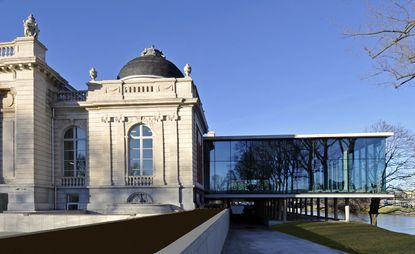
A new urban axis has been taking shape in the Southern Belgian city of Liège, starting at the Santiago Calatrava-designed train station, via a pedestrian bridge, and up until a shopping and audio-visual centre designed by Ron Arad. The latest addition to this route is a concrete and glass extension to a Fine Arts Palace from 1905, named La Boverie (referencing the erewhile bovine grazers of the region) and situated in the green lung of this formerly heavily industrial city – on an island even, created by the river Meuse and its Derivation canal.
A competition six years ago, set up to refresh the historical building, gave the green light to Rudy Ricciotti who, in collaboration with local firm p.HD, founded by Paul Hautecler & Pascal Dumont, decided not to demolish the original building. 'I wanted to sublimate it, give it renewed energy, restore it and give its quality back,' said Ricciotti, stressing vigorously his allegiance to the ancient masters of architecture.
The new wing is a discrete, almost self-effacing expansion, connecting the museum with its surroundings. Ricciotti and p.HD employed local skilled workers in order to build the concrete structure, an element of much importance to Ricciotti. 'This is a project that utilises local resources and shares the work with real professionals. That’s the role of architecture,' he says.
The restored museum hosts its first temporary exhibition 'En Plein Air' ('In the open air'), in close collaboration with the Louvre, on the ground-floor level. The permanent collections are housed on the lower level and include a ‘Black Gallery’, a darkened space with fragile works on paper: from Matisse to Magritte and Hergé’s early Tin Tin’s.
With its almost Egyptian style HPC concrete pillars, La Boverie is a characteristic Ricciotti building, in which, he said, he 'excuses himself for being there.' The main focus remains on the museum’s Mannerist architecture: 'I find this building very attractive,' he added, 'so I wanted to create an embrace of beauty.'
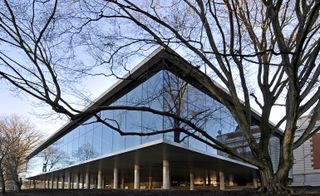
When the team won the competition to breathe new life to the museum, they decided not to demolish it, but instead create a modern expansion for it

The new wing connects the museum with its surroundings and was named ‘La Boverie’, after the bovine grazers formerly found in the region

The architects employed local skilled workers in order to build the new concrete structure

The old elements were also carefully restored. Ricciotti wanted the main focus to remain with the existing building
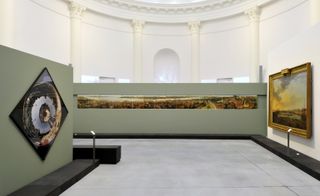
Now, the ground floor level houses the museum’s opening show, ’En Plein Air’ (’In the open air’)...
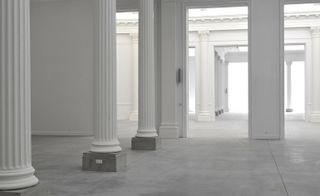
...while the permanent collections are housed on the structure’s lower level
INFORMATION
For more information on the design visit the Rudy Ricciotti website
Photography: Marc Verpoorten
Wallpaper* Newsletter
Receive our daily digest of inspiration, escapism and design stories from around the world direct to your inbox
-
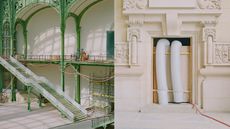 Grand Palais restoration in Paris through the lens of champion fencer Enzo Lefort
Grand Palais restoration in Paris through the lens of champion fencer Enzo LefortAs Paris’ Grand Palais prepares to reopen following extensive restoration by Chatillon Architectes, we visit the site with champion fencer and photographer Enzo Lefort, who documented the space ahead of the Olympic Games 2024
By Ellie Stathaki Published
-
 Lap-See Lam’s giant dragon head and tail takes over the Nordic Pavilion at the Venice Biennale
Lap-See Lam’s giant dragon head and tail takes over the Nordic Pavilion at the Venice BiennaleLap-See Lam takes over The Nordic Pavilion with a giant dragon head and tail, while her dynamically composed ‘Altersea Opera’ considers language and representation
By Emily Steer Published
-
 The Light Touch Turntable by John Tree and Neal Feay offers a new spin on sound and vision
The Light Touch Turntable by John Tree and Neal Feay offers a new spin on sound and visionLaunching at Milan Design Week 2024, the Light Touch Turntable by John Tree and Neal Feay is made of anodised aluminium and has an automated arm to avoid scratching of records, for seamlessly tuned high fidelity
By Rosa Bertoli Published
-
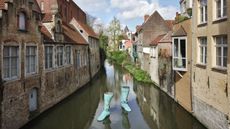 Bruges Triennial 2024 takes over the city with contemporary art and architecture
Bruges Triennial 2024 takes over the city with contemporary art and architectureBruges Triennial 2024, themed 'Spaces of Possibility', considers sustainability and liveability within cities, looking towards a greener future
By Ellie Stathaki Published
-
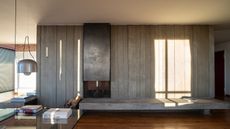 ‘Interior sculptor’ Christophe Gevers’ oeuvre is celebrated in new book
‘Interior sculptor’ Christophe Gevers’ oeuvre is celebrated in new book‘Christophe Gevers’ is a sleek monograph dedicated to the Belgian's life work as an interior architect, designer, sculptor and inventor, with unseen photography by Jean-Pierre Gabriel
By Tianna Williams Published
-
 A Belgian house in the fields blends subtle minimalism with family life
A Belgian house in the fields blends subtle minimalism with family lifeHouse in the Fields by Stef Claes is a family retreat in the green Belgian countryside sprinkled with a US modernist architecture twist
By Ellie Stathaki Published
-
 House P’s linear, leafy composition aims for a ‘sensory architecture’
House P’s linear, leafy composition aims for a ‘sensory architecture’House P by Vandenborre Architecten is a family home conceived as a leafy sanctuary of minimalist elegance in suburban Belgium
By Ellie Stathaki Published
-
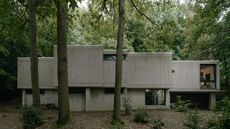 This 1970s brutalist house in Belgium has a new life as a designer’s home and studio
This 1970s brutalist house in Belgium has a new life as a designer’s home and studio1970s brutalist house Villa Stuyven is now home to creative couple Bram Kerkhofs and Lore Baeyens, providing a concrete-lined backdrop to a life of design and collaboration
By Jonathan Bell Published
-
 Step inside the Pringiers family’s rural retreat in Belgium
Step inside the Pringiers family’s rural retreat in BelgiumBelgian architect Glenn Sestig’s latest project for the Pringiers family is a rural retreat and private gallery featuring an award-winning concrete construction
By Ellie Stathaki Published
-
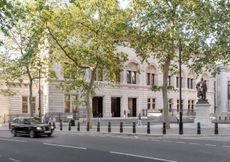 National Portrait Gallery reopens its refreshed home
National Portrait Gallery reopens its refreshed homeLondon’s National Portrait Gallery reopens with a design by leading architect Jamie Fobert and conservation specialist Purcell
By Ellie Stathaki Published
-
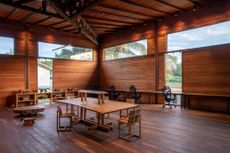 The Museum of Amazonian Science offers global hope and sustainability
The Museum of Amazonian Science offers global hope and sustainabilityAn environmentalist’s ambitious project includes the Museum of Amazonian Science in Brazil and fulfils his vision of powering up the local bioeconomy and saving humanity
By Scott Mitchem Published